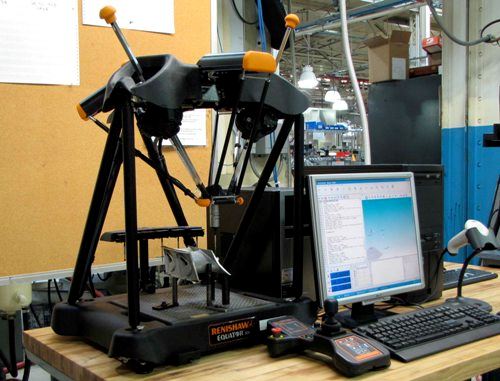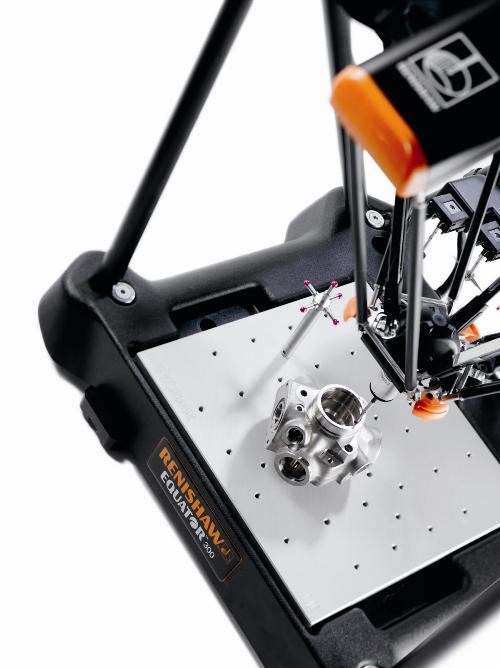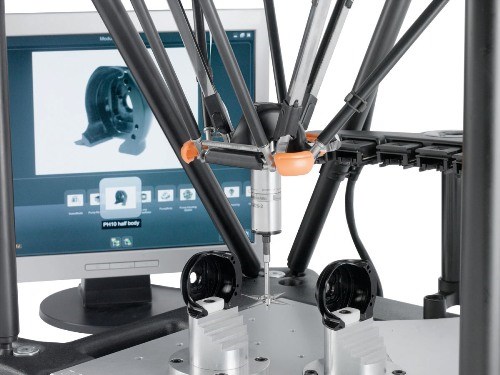Inspection System Brings Programmability to Shopfloor Gaging
Gaging device extends the reach of the CMM out to the production floor, and provides an alternative to dedicated gaging.
Share





In the machining process for a complex and valuable production part, the workpiece is often removed from a flexible, programmable CNC machine tool, only to be inspected using a custom gage that is not flexible or programmable at all. “Hard” gaging—meaning measurement devices on the production floor designed and built for specific parts—provides a way to quickly inspect a workpiece near the machine. Yet hard gaging can also be costly. For jet engine component maker Meyer Tool in Cincinnati, Ohio, designing, building and maintaining a hard gage could cost $20,000, according to quality manager Beau Easton. If a design change to the part necessitates a change to the gage, then this could add thousands of dollars more.
Related Content
How to Evaluate Measurement Uncertainty
Manufacturing and measurement are closely coupled. An important consideration for the use of measurement results is the associated measurement uncertainty. This article describes common metrology terms and provides an example uncertainty analysis.
Read MoreThe Link Between CNC Process Control and Powertrain Warranties
Ever since inventing the touch-trigger probe in 1972, Sir David McMurtry and his company Renishaw have been focused on achieving process control over its own manufacturing operations. That journey has had sweeping consequences for manufacturing at large.
Read MoreThe Many Ways of Measuring Thickness
While it may seem to be a straightforward check, there are many approaches to measuring thickness that are determined by the requirements of the part.
Read MoreHow to Calibrate Gages and Certify Calibration Programs
Tips for establishing and maintaining a regular gage calibration program.
Read MoreRead Next
Building Out a Foundation for Student Machinists
Autodesk and Haas have teamed up to produce an introductory course for students that covers the basics of CAD, CAM and CNC while providing them with a portfolio part.
Read More5 Rules of Thumb for Buying CNC Machine Tools
Use these tips to carefully plan your machine tool purchases and to avoid regretting your decision later.
Read MoreRegistration Now Open for the Precision Machining Technology Show (PMTS) 2025
The precision machining industry’s premier event returns to Cleveland, OH, April 1-3.
Read More






























